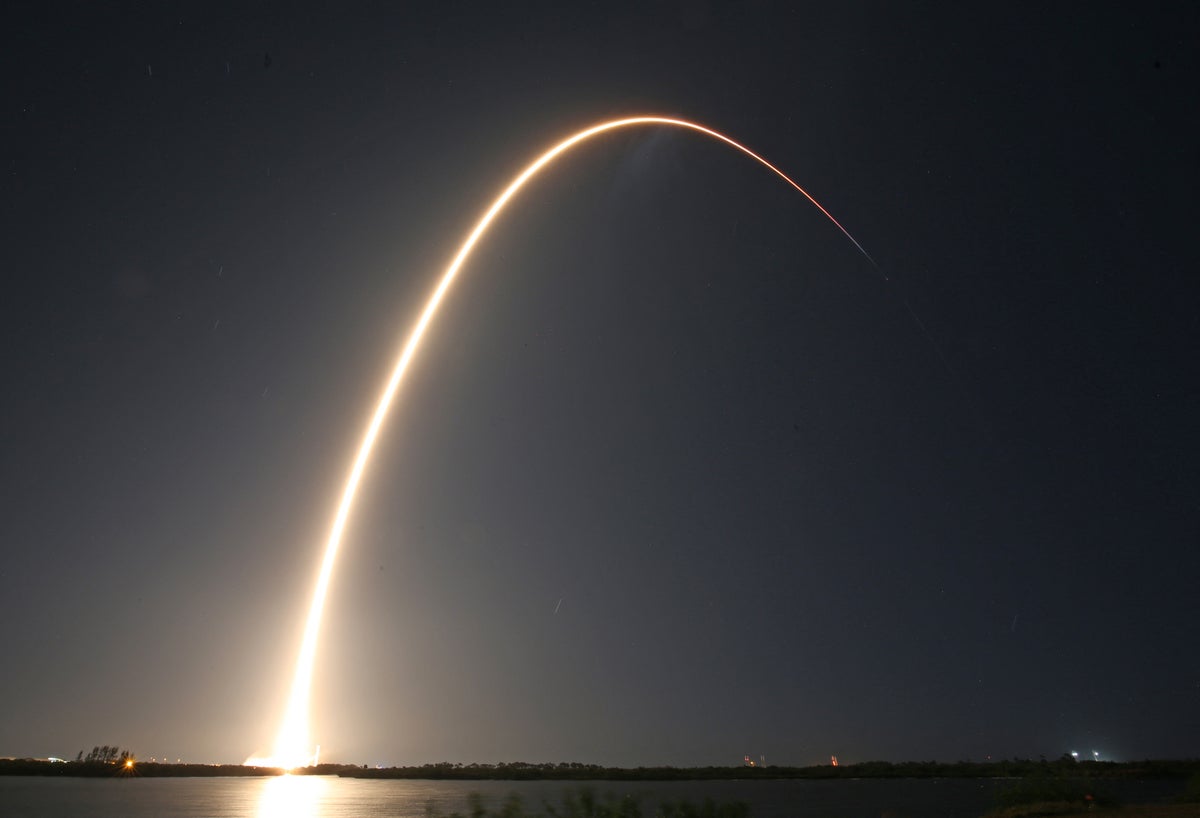40 Years Ago: President Reagan Directs NASA to Build a Space Station
On Jan. 25, 1984, President Ronald W. Reagan directed NASA to build a permanently inhabited Earth orbiting space station within a decade. The President’s announcement turned years of NASA studies into a real program. As originally envisioned, the modular space station would use the space shuttle for assembly and serve as a microgravity research laboratory […]
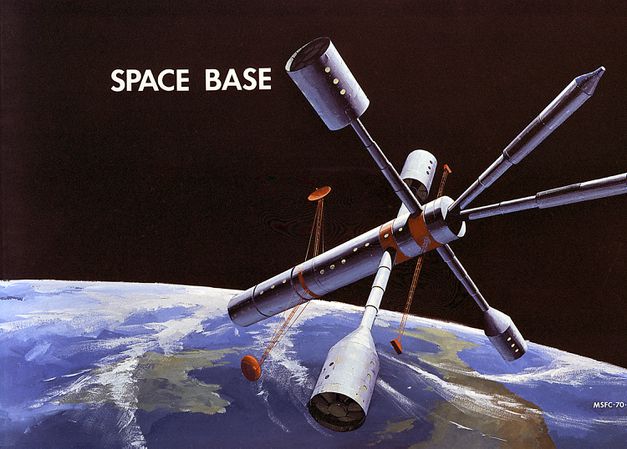
On Jan. 25, 1984, President Ronald W. Reagan directed NASA to build a permanently inhabited Earth orbiting space station within a decade. The President’s announcement turned years of NASA studies into a real program. As originally envisioned, the modular space station would use the space shuttle for assembly and serve as a microgravity research laboratory and observation platform, a servicing station for satellites, and a staging ground for exploration missions. The President urged NASA to invite its international partners to participate in the program. The complexity and cost of such an outpost resulted in multiple redesigns, with the initial Space Station Freedom ultimately evolving into the International Space Station. On-orbit assembly began in 1998, with permanent human habitation beginning two years later.



Left: Wernher von Braun demonstrates a model of his wheel-shaped space station in 1956. Middle: Illustration of one concept of a space base as proposed by the Space Task Group in 1969. Right: The Skylab space station, photographed by the third and final crew after its departure in 1974.
As early as the 1950s, American space pioneer Wernher von Braun already had ideas for large orbiting space stations. He envisioned a wheel-shaped facility, slowly rotating to provide artificial gravity to its several thousand occupants. While such an orbital outpost exceeded available technologies for the foreseeable future, shortly after its founding in 1958, NASA began considering more modest space stations. With President John F. Kennedy’s 1961 pronouncement of a Moon landing as a national goal, plans for space stations took a back seat until after NASA achieved that objective. The Space Task Group (STG) that President Richard M. Nixon commissioned in 1969 to assess post-Apollo space objectives proposed an Earth-orbiting space station for the mid-1970s followed later by a much larger space base among several other ambitious projects. Economic realities of the time precluded such lofty goals; President Nixon approved the space shuttle in 1972, the only STG-recommended project to receive funding. Approval of an American space station awaited a later president. In the meantime, the highly successful experimental Skylab space station, based on Apollo hardware, housed three successive crews of three astronauts each, for 28, 59, and 84 days, in 1973 and 1974.
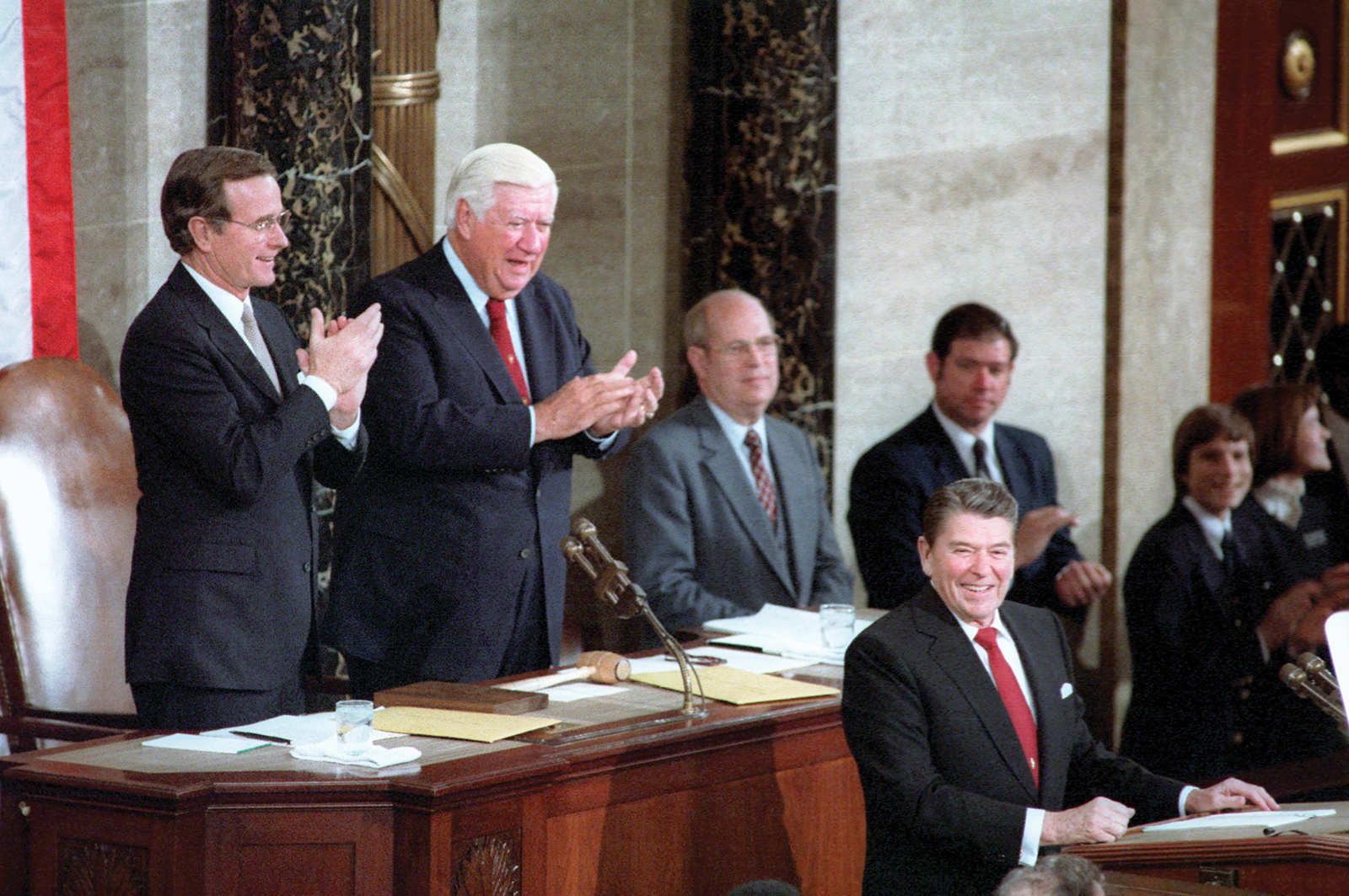
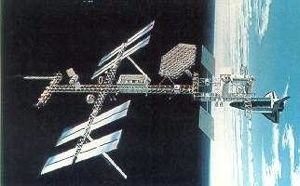
Left: President Ronald W. Reagan during his 1984 State of the Union address to Congress. Right: Space Station Power Tower reference configuration (1984).
During his Jan. 25, 1984, State of the Union address to a joint session of Congress, President Reagan directed NASA to develop a “permanently manned space station and to do it within a decade.” His comments reflected his view of American pre-eminence in space, but also explicitly stated that the United States would invite other nations to join in the project. President Reagan spelled out the benefits to be derived from such an orbiting platform:
Our progress in space—taking giant steps for all mankind—is a tribute to American teamwork and excellence. Our finest minds in government, industry, and academia have all pulled together. And we can be proud to say: We are first; we are the best; and we are so because we’re free. America has always been greatest when we dared to be great. We can reach for greatness again. We can follow our dreams to distant stars, living and working in space for peaceful, economic, and scientific gain. … A space station will permit quantum leaps in our research in science, communications, in metals, and in lifesaving medicines which could be manufactured only in space. We want our friends to help us meet these challenges and share in their benefits. NASA will invite other countries to participate so we can strengthen peace, build prosperity, and expand freedom for all who share our goals.
In response to President Reagan’s direction, NASA Administrator James M. Beggs said, “The space program is alive and well, and we have a new initiative. … The space station will give us a permanent presence in low Earth orbit … and will be the cornerstone of our activities in space through the end of the century and beyond.” He added that the President’s initiatives, “are the right ones for the right time in our history.” In the optimism that followed President Reagan’s announcement, NASA laid out an ambitious plan for a space station composed of three separate orbital platforms to conduct microgravity research as well as Earth and celestial observations, to serve as a transportation and servicing node for space vehicles and satellites, and to stage missions for deep-space exploration. NASA signed agreements with the European Space Agency (ESA) and Japan’s National Space Development Agency (NASDA), now the Japan Aerospace Exploration Agency (JAXA), to provide their own research modules. Canada agreed to provide a robotic servicing system. In April 1985, NASA established a Space Station Program Office at the Johnson Space Center in Houston. Assessments of the original “Dual Keel” design determined that it was overly complex to build and cost estimates for the ambitious space station continued to rise. Over the next several years, engineers and managers redesigned the facility and simplified it to a single-truss configuration with the pressurized modules clustered near the core and the solar arrays for power generation at the ends of the truss. In July 1988, President Reagan announced that the orbital facility would be called Space Station Freedom, and two months later the Unites States, Japan, Canada and nine ESA member states signed an Inter-Governmental Agreement (IGA) for its construction and utilization. The redesigned facility would focus on microgravity research.
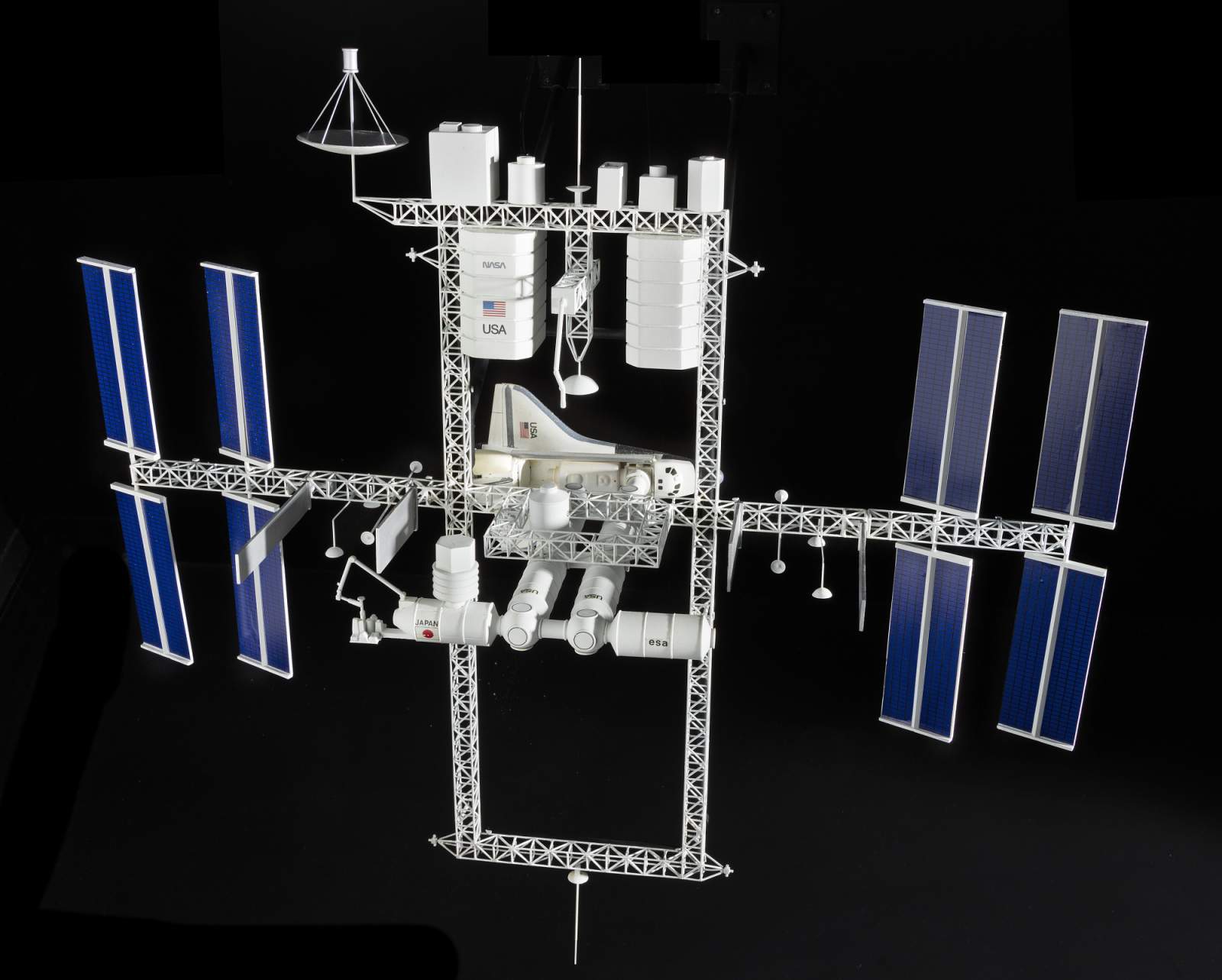
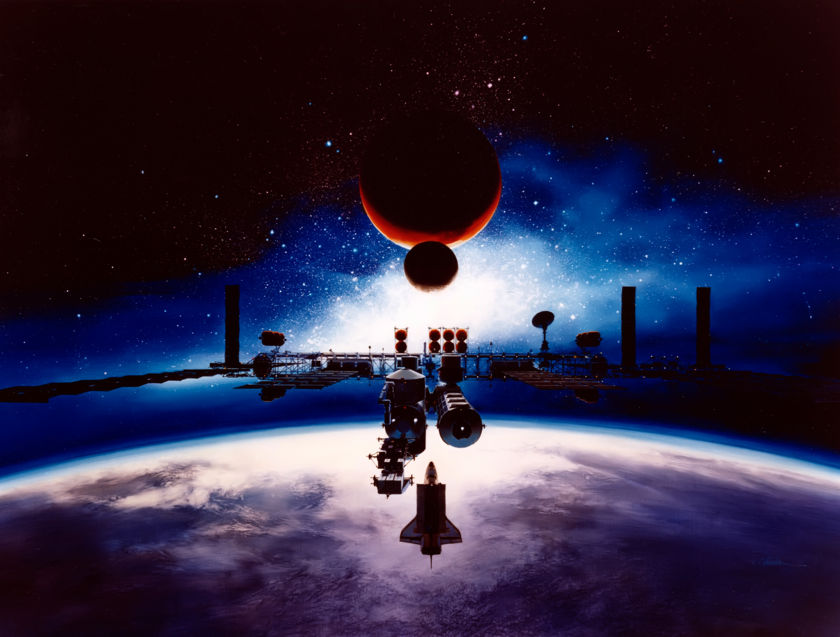
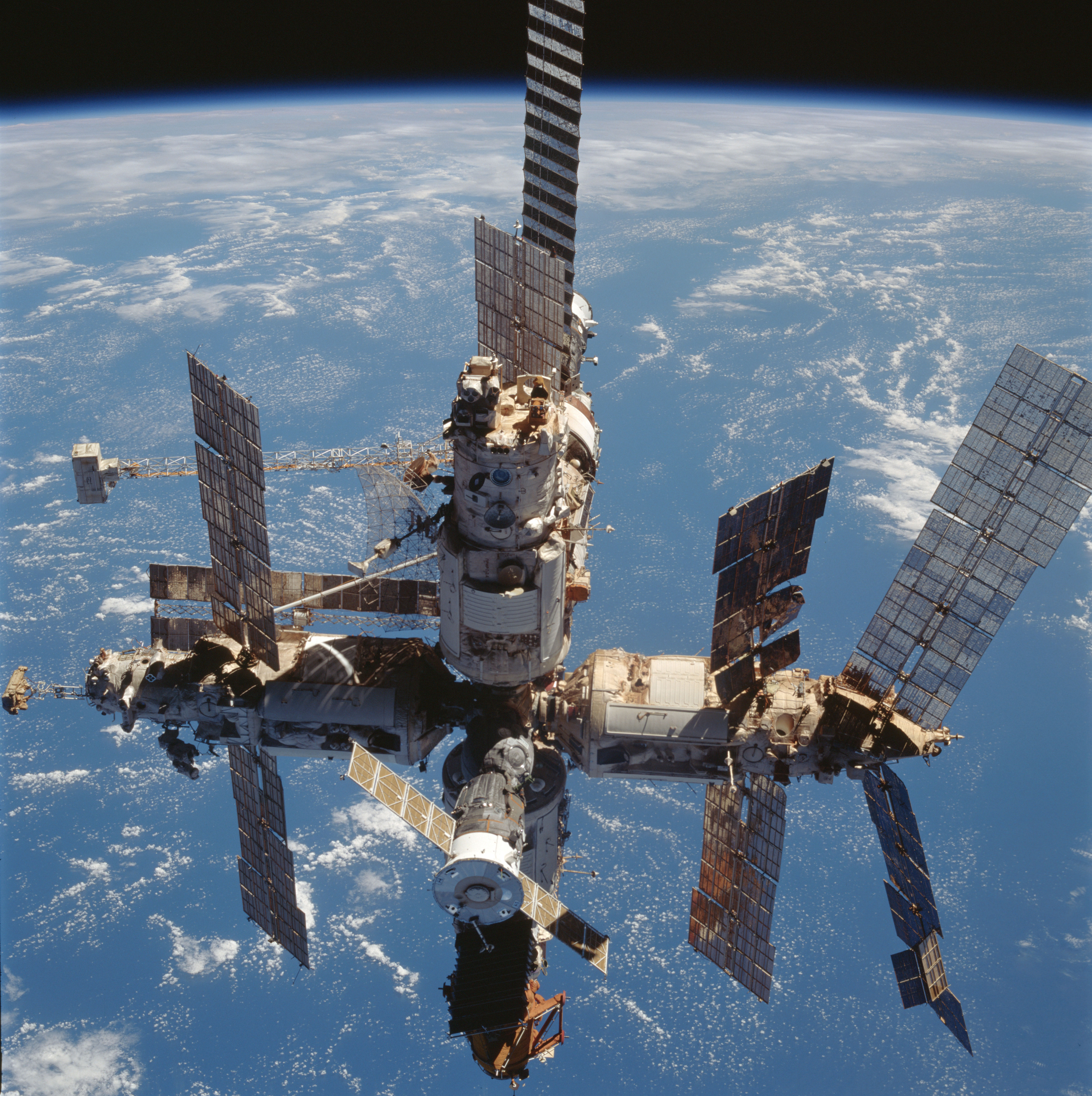
Left: Model of the Space Station showing the proposed dual keel configuration (1985). Middle: Illustration of Space Station Freedom by Alan Chinchar (1991). Right: Russian space station Mir photographed from Space Shuttle Discovery during the STS-91 mission (1998).
Space Station Freedom underwent several more redesigns to keep it cost-effective. In the meantime, the Soviet Union operated its Mir space station beginning with the launch of its first module in 1986. Over the years, the Soviets added several elements to increase the facility’s research and habitation capabilities. With the collapse of the Soviet Union in 1991, the future of Mir and its planned Mir-2 successor faced uncertainty in the new cash-strapped Russia. To take advantage of its extensive experience with operating space stations and keeping crews on orbit for up to a year, in 1993 President William J. “Bill” Clinton invited Russia to join the space station program as a full partner, essentially adding modules planned for Mir-2 to U.S., European, Japanese, and Canadian elements from Space Station Freedom. The new outpost would be called the International Space Station. In preparation for space station operations, between 1995 and 1998, seven American astronauts joined Russian cosmonauts as long-duration residents aboard Mir, with space shuttles providing transportation and resupply logistics. On Jan. 29, 1998, representatives from the United States, Russia, Japan, Canada and 11 participating ESA countries met at the U.S. State Department in Washington, D.C., and signed an updated IGA on Space Station Cooperation. The new IGA established the overall cooperative framework for the design, development, operation, and utilization of the space station and addressed several legal topics, including civil and criminal jurisdiction, intellectual property, and the operational responsibilities of the partners.
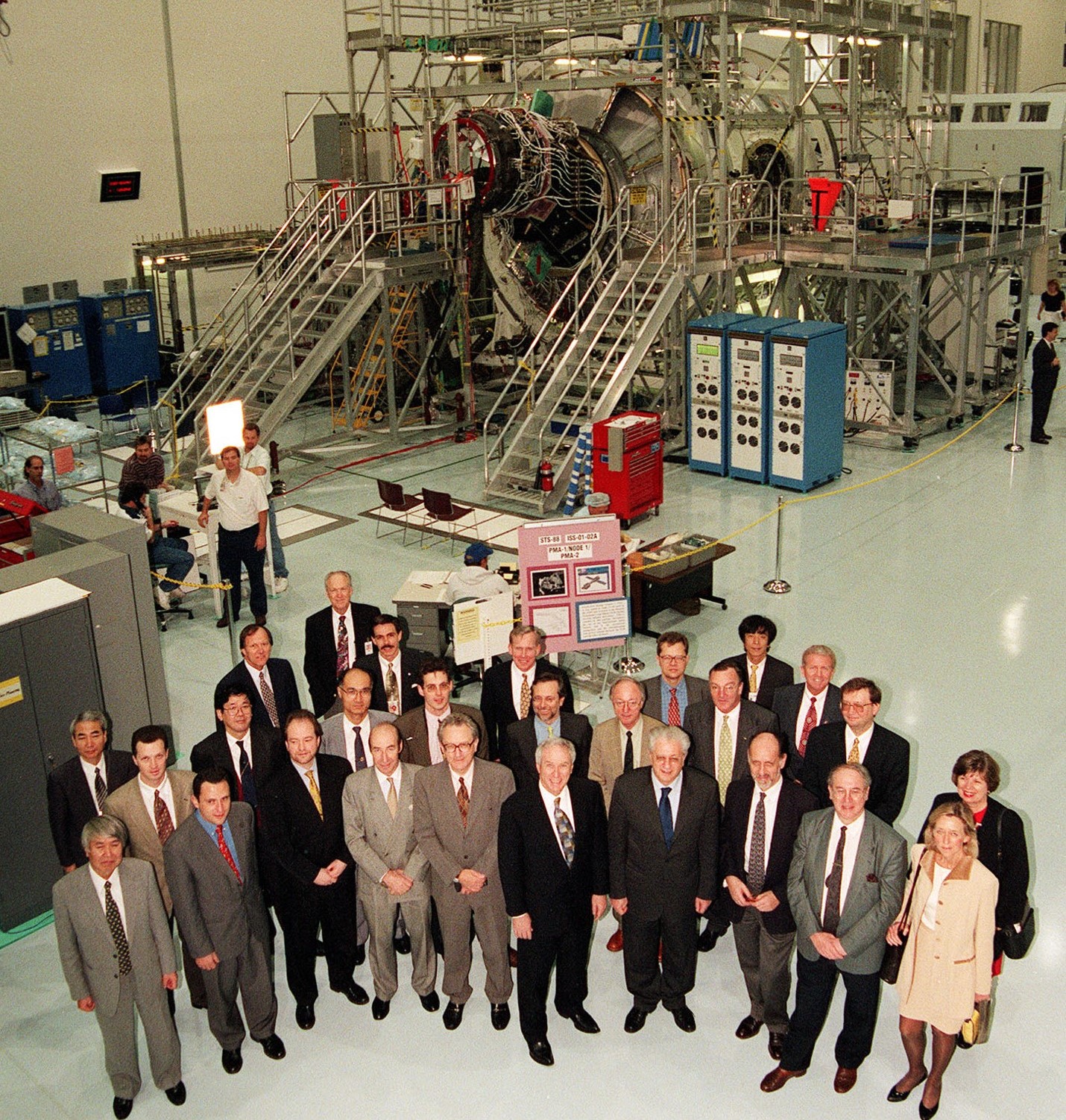
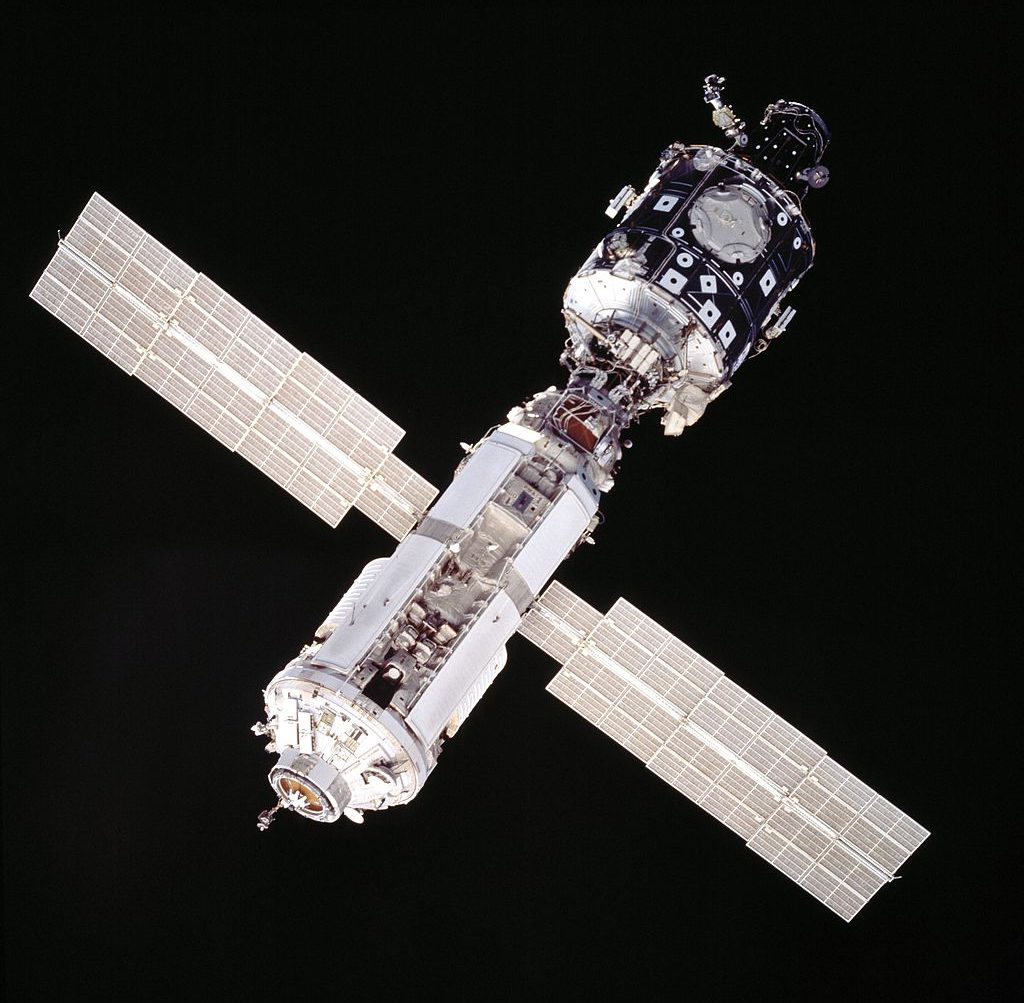

Left: Signatories of the 1998 Intergovernmental Agreement visit the Space Station Processing Facility at NASA’s Kennedy Space Center in Florida, and pose in front of the Unity Node 1 module being prepared for launch. Middle: Zarya, left, and Unity, the first two modules of the nascent space station. Right: The Expedition 1 crew of Yuri P. Gidzenko of the Russian Space Agency (RSA), now Roscosmos, William M. Shepherd of NASA, and Sergei K. Krikalev of RSA.
Ten months after the signing of the 1998 IGA, on-orbit construction of the space station began during the STS-88 mission, with the joining of the first two elements, the Zarya and Unity modules. The first expedition crew of NASA astronaut William M. Shepherd and Russian Space Agency, now Roscosmos, cosmonauts Yuri P. Gidzenko and Sergei K. Krikalev arrived to take up residence aboard the station on Nov. 2, 2000. More than 23 years later, multinational crews continue to live and work aboard a much enlarged and permanently inhabited space station, a unique microgravity laboratory for conducting research in a wide variety of scientific disciplines and a testbed for future human exploration programs.
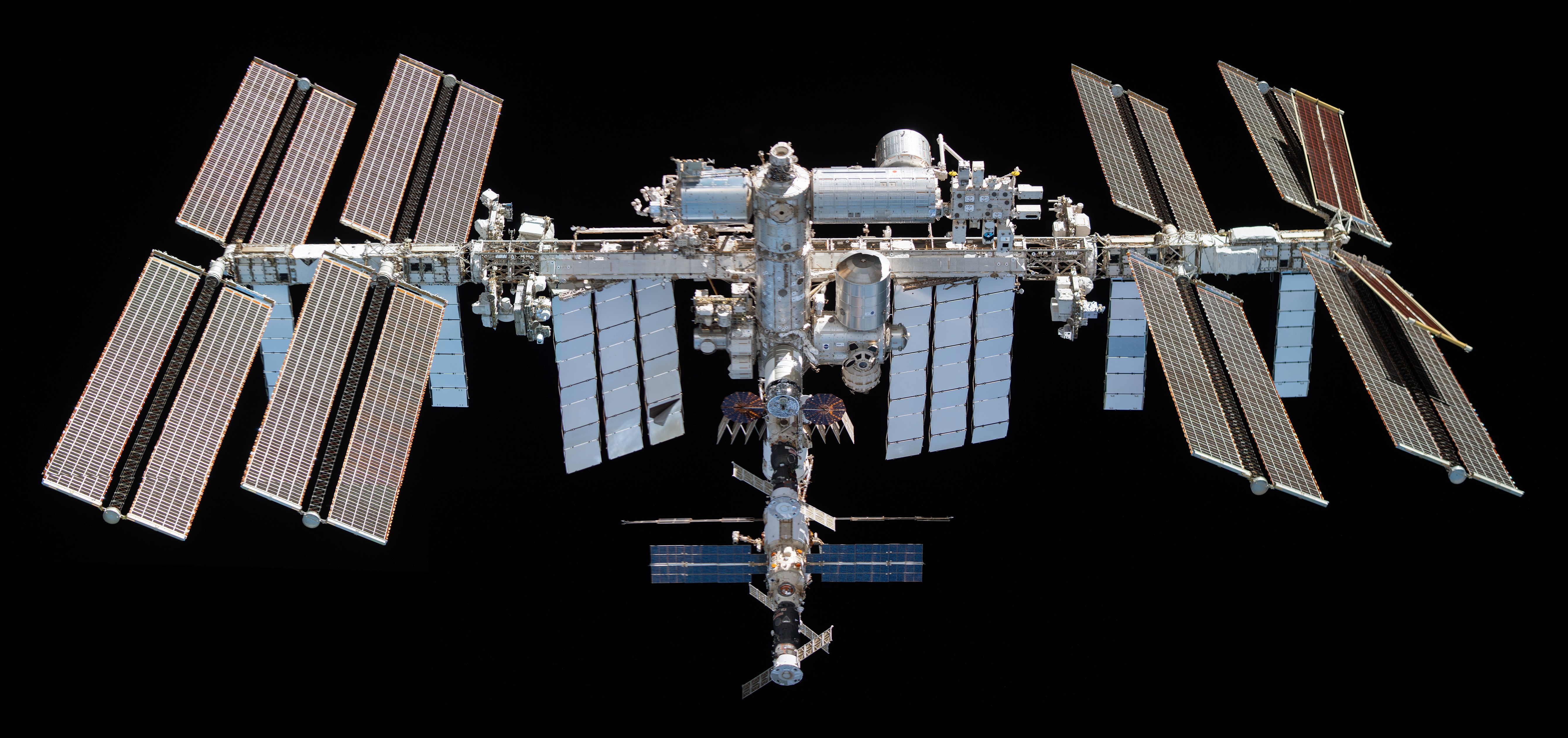
The International Space Station as it appeared in 2021.
What's Your Reaction?




















